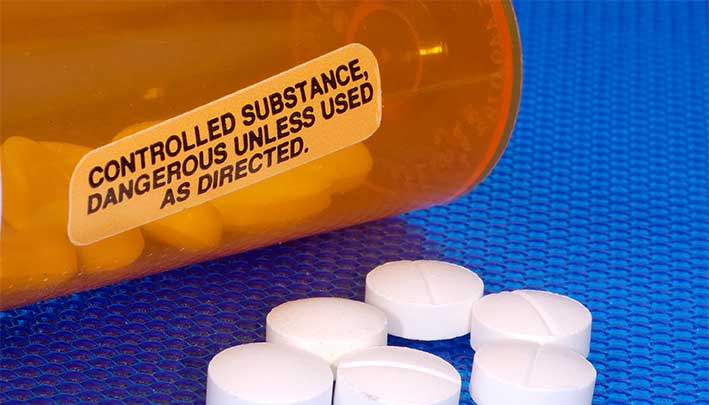Drug abuse is a significant problem in Massachusetts. While abusing any drug may harm your health, some substances pose greater risks than others. According to Massachusetts law, there are five different classes of controlled substances.
A controlled substance is a substance that is regulated by the government because it poses a high risk of abuse and addiction. Each class of controlled substances has different penalties for possession and distribution.
Substances in Class A have the harshest penalties because they generally pose the most serious health risks. Substances in Class E have the mildest penalties because they generally pose the fewest health risks.
Class A
Class A mostly consists of opioids. Opioids (also called opiates) are pain relievers that change the way your body reacts to pain. As depressants, they slow down your central nervous system. Common opioids include:
- codeine
- heroin
- hydrocodone (brand name Vicodin)
- morphine
- fentanyl
Along with treating pain, opioids can also cause relaxation and euphoria (intense joy). That’s why some people abuse them. Opioid abuse often leads to opioid addiction. It also increases your risk of overdose.
An opioid overdose occurs when the drug slows your breathing and heart rate to a life-threatening degree.
Besides opioids, Class A also includes “date rape drugs,” which are used to incapacitate victims of sexual assault. They include:
- flunitrazepam (brand name Rohypnol), a drug that can cause sedation, slowed heart rate, respiratory depression (slow, ineffective breathing), and loss of consciousness
- gamma hydroxy butyric acid (GHB), a drug that can cause seizures, respiratory depression, and loss of consciousness
- ketamine, a drug that can cause sedation, hallucinations, respiratory depression, and loss of consciousness
People who possess or distribute drugs in Class A may face up to three years in jail or a fine of up to $10,000.
Class B
Class B includes certain opioids not included in Class A, such as oxycodone (brand name OxyContin or Percocet).
It also includes stimulants. Stimulants are drugs that speed up your central nervous system. They make you feel energized and alert. They can also have negative side effects, such as anxiety, paranoia, aggression, seizures, stroke, and heart attack.
The most well-known stimulants include:
- cocaine, a white powder made from the leaves of the coca plant
- methamphetamine, a highly addictive substance made with over-the-counter drugs like pseudoephedrine and dangerous chemicals like ammonia
- prescription drugs used to treat attention-deficit/hyperactivity disorder, including amphetamine (Adderall) and methylphenidate (Ritalin)
Class B also includes LSD (lysergic acid diethylamide). This powerful hallucinogenic drug can make you hallucinate (see, hear, or feel things that aren’t there). Other effects may include increased heart rate, increased body temperature, anxiety, and psychosis (a feeling of disconnection from reality).
People who possess or distribute drugs in Class B may face up to two years of jail time or a fine of up to $10,000.
Class C
Class C includes benzodiazepines, such as alprazolam (brand name Xanax), clonazepam (Klonopin), and diazepam (Valium). These drugs are sometimes prescribed to treat anxiety, insomnia, and seizures.
Benzodiazepines can be addictive, especially when misused. Other potential effects include:
- extreme drowsiness
- confusion
- depression
- memory problems
In addition, if you take a large amount of benzodiazepines, you may overdose. Common symptoms of a benzodiazepine overdose include:
- impaired coordination
- slurred speech
- rapid heartbeat
- chest pain
- trouble breathing
- seizures
Other drugs in Class C include:
- psilocybin, a hallucinogenic drug that can cause muscle weakness, panic attacks, and psychosis
- mescaline, a hallucinogenic drug that can cause nausea, hallucinations, and anxiety
People who possess or distribute drugs in Class C may face up to two years in jail or a fine of up to $5,000.
Class D
Class D includes marijuana. Marijuana consists of dried parts from the cannabis plant. It can cause effects such as:
- mood changes
- altered senses
- trouble thinking
- memory problems
- hallucinations
Also, if you use marijuana on a regular basis and then stop, you may experience unpleasant withdrawal symptoms like anxiety, irritability, and loss of appetite. In Massachusetts, it’s illegal to possess more than one ounce of marijuana.
Class D also includes barbiturates. Barbiturates are substances that are sometimes prescribed to treat anxiety and seizures. They pose a high risk of addiction and fatal overdose, especially when abused.
People who possess or distribute drugs in Class D may face up to two years in jail or a fine of up to $5,000.
Class E
Class E includes prescription drugs that contain small amounts of opioids like codeine and morphine. When abused, these drugs can cause addiction and overdose.
People who possess or distribute drugs in Class E may face up to nine months in jail or a fine of up to $2,500.
If you or someone you love struggles with drug use, please contact Northeast Addictions Treatment Center. Our board-certified health care providers offer medical detox, mental health counseling, and many other forms of personalized, evidence-based care.
Sources:
The General Court of the Commonwealth of Massachusetts — General Law – Part I, Title XV, Chapter 94C, Section 31
National Institute on Drug Abuse — Massachusetts: Opioid-Involved Deaths and Related Harms
United States Department of Justice — Other Dangerous Drugs
United States National Library of Medicine — Opioid Overdose


